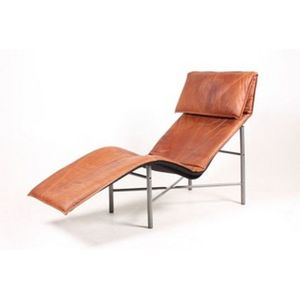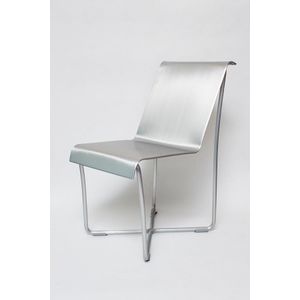Mahogany Sabre-Leg Dining Chair
You must be a subscriber, and be logged in to view price and dealer details.
Subscribe Now to view actual auction price for this item
When you subscribe, you have the option of setting the currency in which to display prices to $Au, $US, $NZ or Stg.
- Sabre Leg - The sabre leg is commonly associated with chairs made in the Regency or classical revival manner of the early 19th century. The form was copied from designs of the ancient Grecian chair known as a klismos found on painted classical vases. The characteristic of the sabre leg is a wide, sweeping backward curve which was frequently reeded, similar to a sabre. The sweep of the front legs was sometimes complemented by a corresponding curve in the back legs of the chair, though on most domestic furniture the sweep of the rear support was not as pronounced. Sabre legs are often encountered in reproductions of the regency style. They are uncommon in Australian furniture where, by and large, colonial craftsmen preferred to use turned legs.
- Regency Period - The Regency period in English furniture design refers to the period when King George III, was declared unfit to rule in 1811, and his son ruled as proxy as Prince Regent, until 1820, and then, after the death of his father as George IV until his death in 1830. The Regency period was preceded by the Georgian period (George I, George II, and George III: 1714 - 1811), and was followed by the William IV period, which only lasted until 1837 when William IV died as was succeeded by Queen Victoria.
- Mahogany - Mahogany is a dense, close grained red-coloured timber from the West Indies and Central America. It was first imported into Europe in the the early 18th century and its use continued through the 19th century. It was popular for furniture making because of its strength, the wide boards available, the distinctive grain on some boards, termed flame mahogany and the rich warm colour of the timber when it was polished.. The "flame" was produced where a limb grew out from the trunk of the tree, and this timber was usually sliced into veneers for feature panels on doors, backs and cornices.
Some terms used to describe mahogany relate to the country from which it originally came, such as "Cuban" mahogany, "Honduras" mahogany etc. However unless the wood has been tested the names assigned are more a selling feature, rather than a true indication of the timber's origin.
This item has been included into following indexes:
- chairs, singles / pairs / threes, style or period
- chairs, singles / pairs / threes, timber - mahogany 1,098
Visually similar items

Tord Bjorklund, Scandinavian Chaise Lounge, c. 1970, brown leatherand black enamelled metal, height 93 cm width 162 cm depth 61 cm

A Brno chair by Knoll, originally designed by Ludwig Mies van Der Rohe, tan leather seat back and arm rests on flat bar, Knoll fabric to underside of seat, 59 width x 60 depth x 78 cm height

Two Eames aluminium series office chairs covered with brown leather

Frank Gehry (American, b. 1929), Pair of Superlight Chairs, designed 2004, manufactured by Emeco, each with brushed aluminium seat and frame, labelled 'Emeco by Gehry' (2), height 81 cm width 42 cm depth 52 cm
